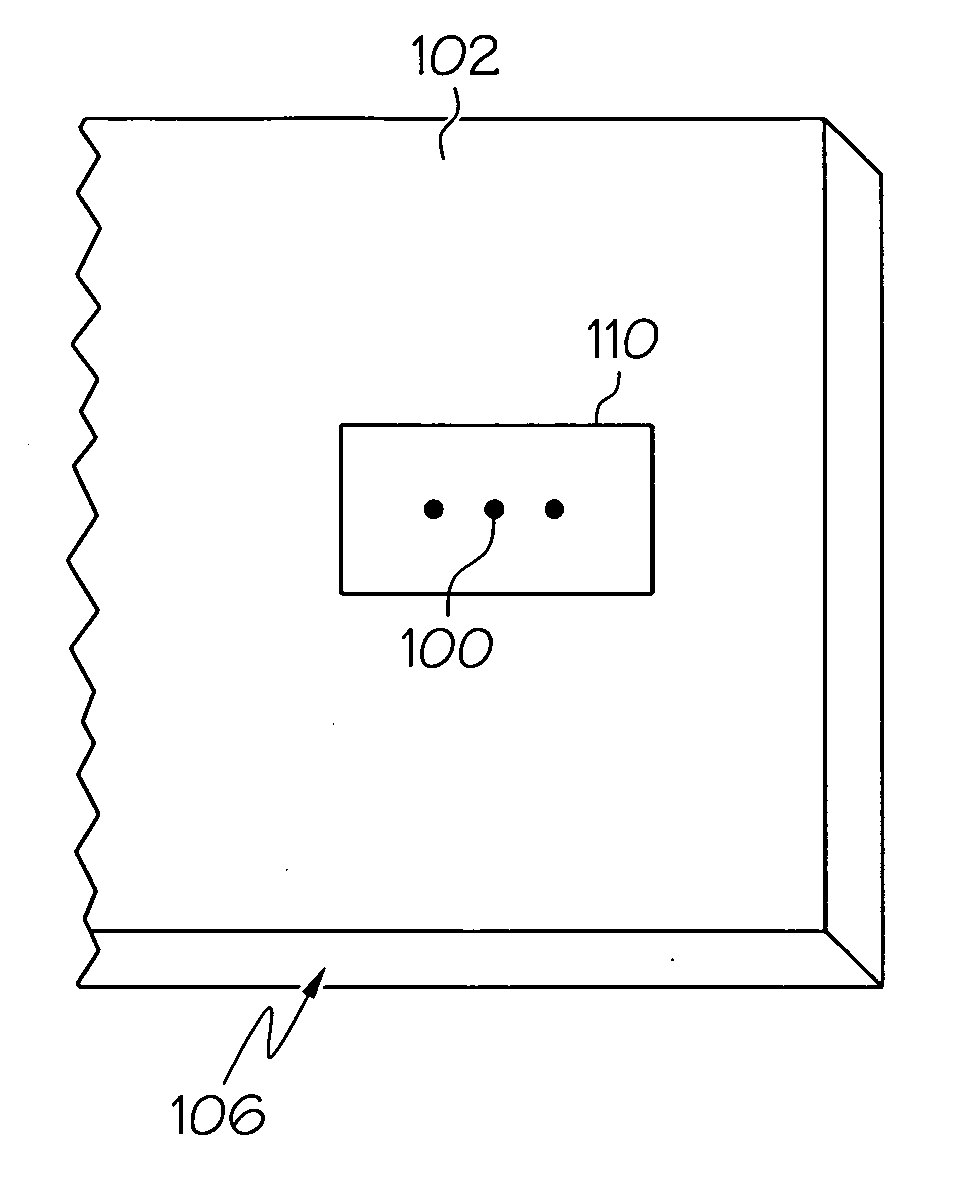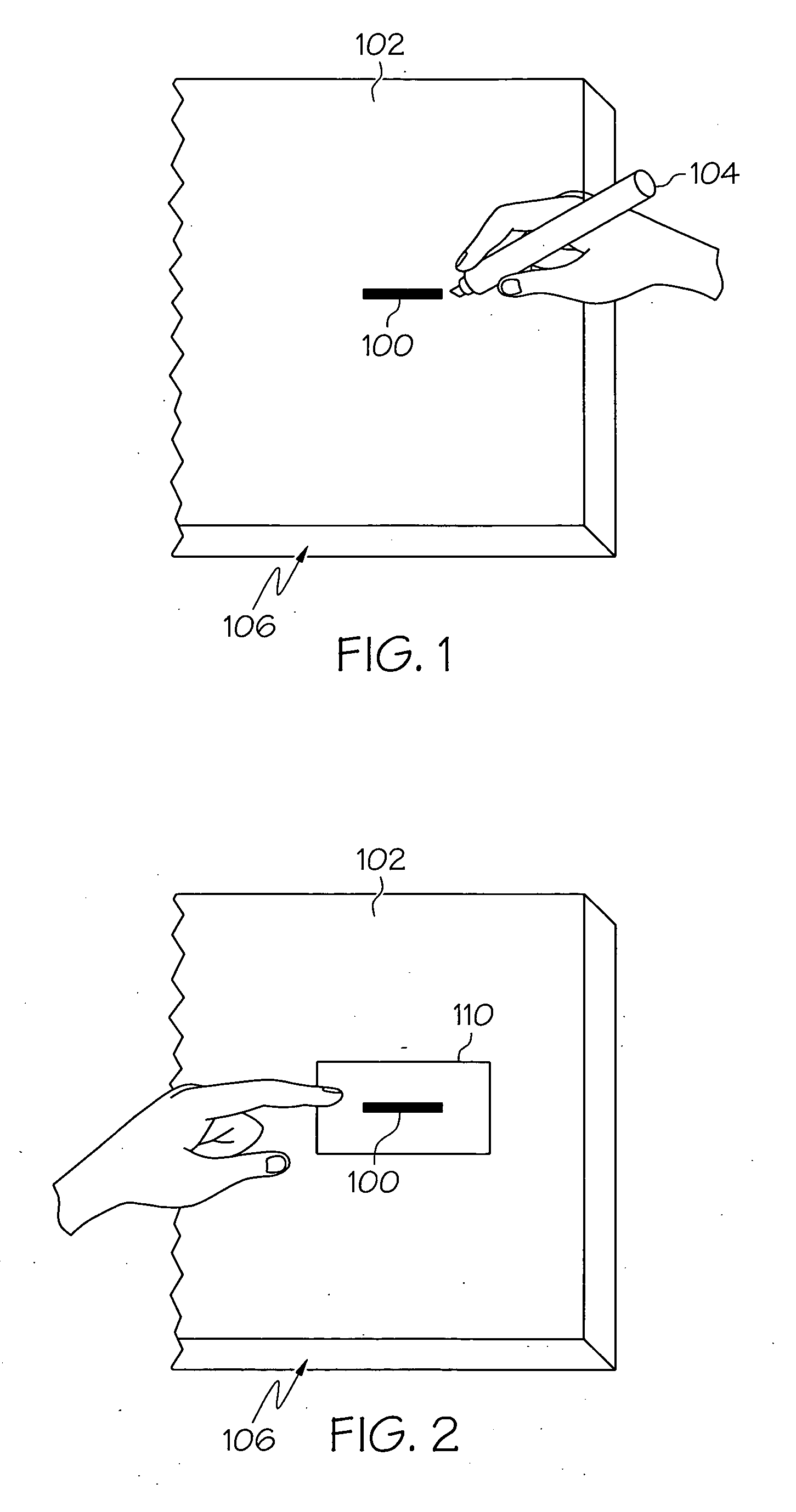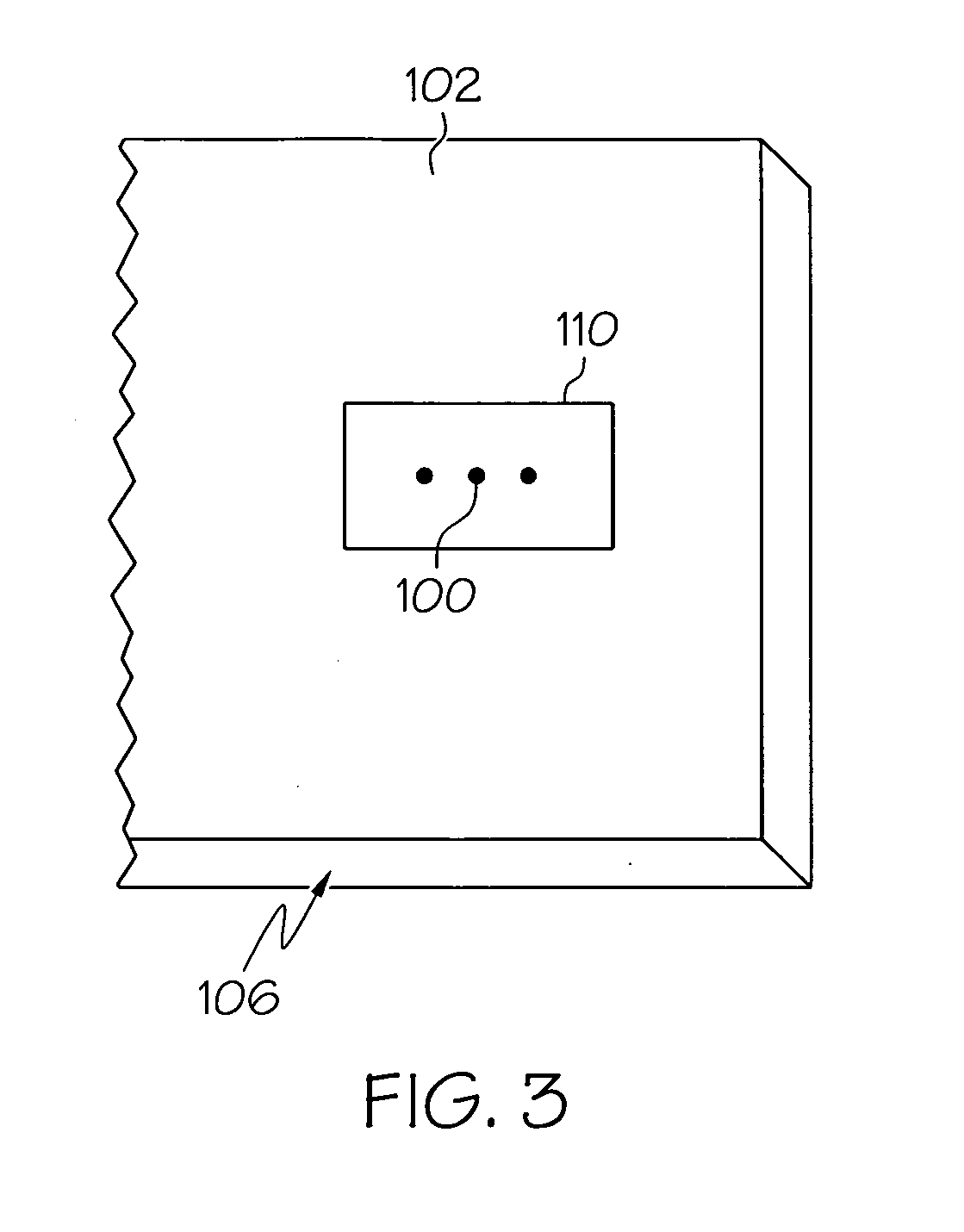Method of sensing high surface temperatures in an aircraft
a technology of high surface temperature and aircraft, applied in the field of temperature sensing, can solve the problems of limited types of commercial temperature sensing labels that are surface mounted to an object, current temperature limitation of these types of temperature indicating paint, and inability to accurately detect the type of temperature indicators
- Summary
- Abstract
- Description
- Claims
- Application Information
AI Technical Summary
Benefits of technology
Problems solved by technology
Method used
Image
Examples
Embodiment Construction
[0014]The following detailed description of the invention is merely exemplary in nature and is not intended to limit the invention or the application and uses of the invention. Furthermore, there is no intention to be bound by any theory presented in the preceding background of the invention or the following detailed description of the invention.
[0015]Surface temperature sensing is desirable in aircraft applications, and more particularly in the maintenance of aircraft line replaceable units (LRUs), such as a valve, actuator, portion of a turbine engine, or the like due to the deleterious effect high temperatures may have on these units; yet, it is also desirable that erroneous reporting be avoided to deter against unnecessary replacement costs.
[0016]Increased surface temperatures of aircraft LRUs are identified according to the present invention with temperature sensors that are manufactured to sense a pre-determined temperature dependent upon the LRU location in the aircraft. The ...
PUM
| Property | Measurement | Unit |
|---|---|---|
| temperatures | aaaaa | aaaaa |
| sensing temperatures | aaaaa | aaaaa |
| temperature | aaaaa | aaaaa |
Abstract
Description
Claims
Application Information
 Login to View More
Login to View More - R&D
- Intellectual Property
- Life Sciences
- Materials
- Tech Scout
- Unparalleled Data Quality
- Higher Quality Content
- 60% Fewer Hallucinations
Browse by: Latest US Patents, China's latest patents, Technical Efficacy Thesaurus, Application Domain, Technology Topic, Popular Technical Reports.
© 2025 PatSnap. All rights reserved.Legal|Privacy policy|Modern Slavery Act Transparency Statement|Sitemap|About US| Contact US: help@patsnap.com



